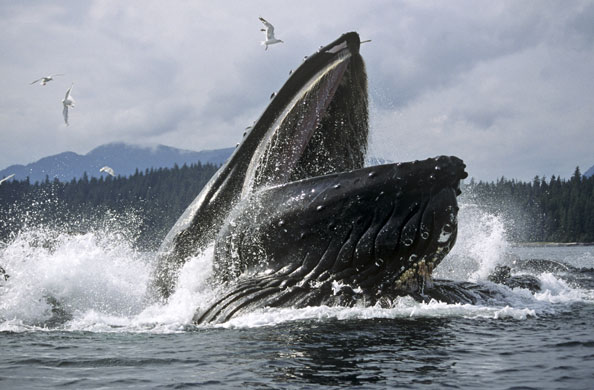Ecology
Habitat
The habitat of Euphausia
recurva is highly variable, being largely pelagic they can be found in all
basins of the world and vary from purely oceanic habitats to reefs, continental
slopes and even estuaries depending on currents and their life stage. Although
Euphausia can populate depths of 4000m and more the majority of these species
are much larger and species such as recurva
tend to stay higher in the water column. They are also known to aggregate
in great numbers in benthic areas for protection and mating and are restricted
to subtropical areas (Brinton, et al. 2000).
Vertical Distribution
The
vertical distribution of krill in general varies significantly with many
staying on the surface for their majority of their lives and others making
regular migrations from great depths to the surface. E.recurva have been found at depths of over 1000m but are more
commonly closer to 20m (Encyclopedia of Life). The vertical migration of euphausiaceans is
commonly diurnal (occurs on a daily basis) but the timing and reasons behind it
are unknown (Bary, 1956).
Ecological
significance
The euphausiaceans are thought to rival
the biomass of the most abundant zooplankton on earth, the copepods (Santora,
2012). The euphausiaceans have an estimated biomass of 300 million tonnes
throughout the world’s oceans and are undoubtedly a critical organism in transferring
energy from the bottom of the food web (Everson,
2008). Krill are consumed by a wide range of predators,
many of which primary feed on krill. These predators range from larval fish to
large game fish such as tuna and marlin as well as marine mammals and birds.
Their importance in these roles also emphasises their importance to humans as
we rely on many of their predators as resources with many fisheries highly reliant
of their presence such as the salmon, herring, tuna and sardine fisheries (Everson, 2008).
Krill are also fast becoming a popular fishery for a combination of human and
pet consumption due to their high nutrient value. The overfishing of this link
in the food chain is likely to have disastrous consequences both in excess
phytoplankton and limited food for higher level predators.

Picture (Whale Photos)
|